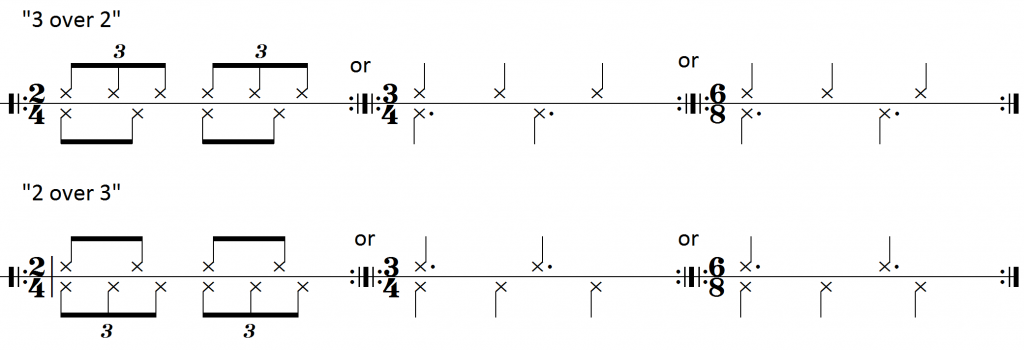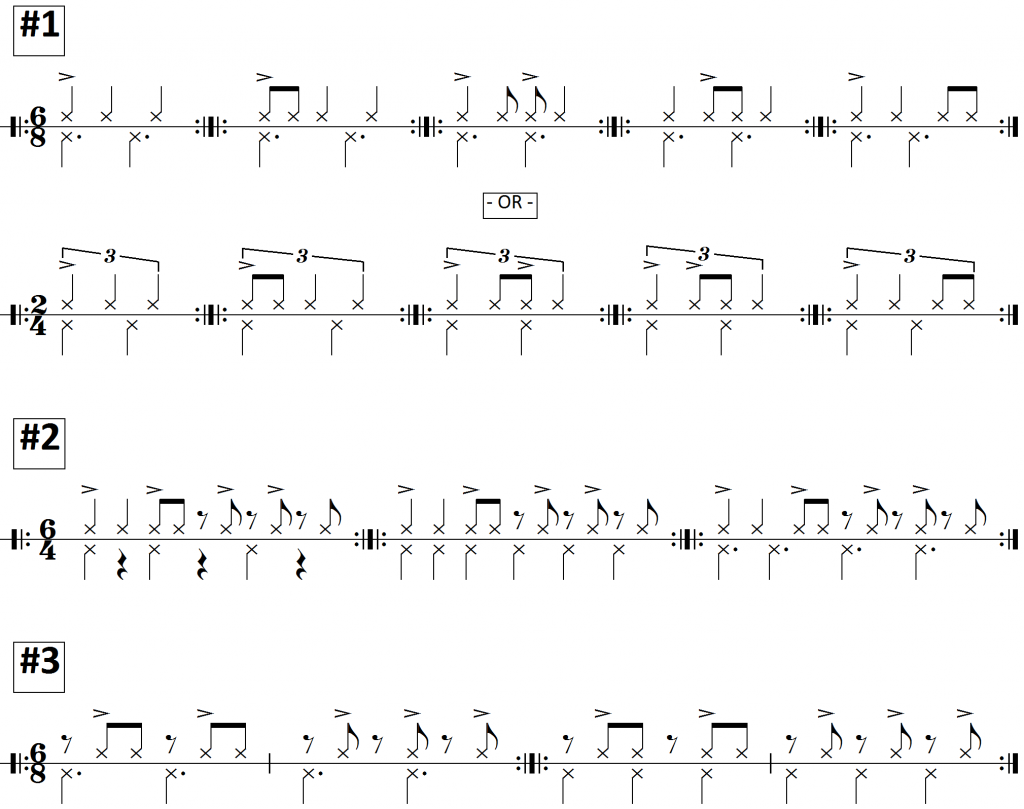What Are Skills Every Musician Should Learn
Rhythm is one of the most of import aspects of jazz. If you want to have your playing to the adjacent level – no matter where y'all're at in your musical development – you must constantly challenge yourself to better the rhythmic aspects of your playing.
It's important because the overall rhythmic content and feel (the "groove" or "fourth dimension-feel" or "beat") are one of the first things that listeners notice when they hear any fashion of music. You don't have to exist a trained musician or know annihilation near music theory or specialized terminology to know when music feels skilful rhythmically. Yous but feel it – commonly on some guttural, concrete level.
And, as jazz musicians, rhythm is especially important when you consider that the special and elusive rhythmic feeling we telephone call "swing" has been an important element in many jazz styles for much of the music's history.
Indeed, we want to be able to swing hard. We desire to be able to make music with such a deep groove that people can't assistance but move their bodies when they hear the states play. As jazzers, we have all sorts of words and phrases we use to describe the special moments when our improvisations accomplish an infrequent sense of time-feel and a certain rhythmic sparkle. Nosotros say the music "grooves," is "in the pocket," "swingin'," is "locked in," "clicks," "dances," "flows," etc.
The rhythmic aspects that make jazz a unique and compelling style of music are incredibly elusive, elastic, variable, and dynamic. It's notoriously hard to pinpoint, describe, capture, teach, and learn the subtle shadings of jazz rhythmic concepts such equally "swing."
That being said, no matter how challenging it may be to define, conceptualize, and practice swing, the truth is y'all have the power to meliorate your sense of time, time-feel, rhythm, swing, and phrasing through concerted effort.
Don't permit myths like "you can't teach swing" and "you either have adept time/phrasing/rhythm, or you don't" deter or discourage you from achieving your rhythmic goals.
And so how tin can you improve your playing rhythmically?
Rhythm is a HUGE topic, and in that location's no way I or anyone else could address all at that place is to say and practice in one mail service. Nevertheless, I want to show you iii practicing tools that, with work, tin can help y'all have your playing to the side by side level rhythmically.
I of the best ways to improve your sense of musical time is to exercise polyrhythms and rhythmic independence exercises.
What are polyrhythms?
To refresh our memories, a polyrhythm is a musical texture in which there are multiple overlapping, interweaving, and contrasting rhythmic layers or elements occurring simultaneously.
Jazz is full of polyrhythms – in fact, polyrhythms are one of the defining rhythmic features of many styles of jazz music. For those with a good for you historical/social marvel, most music scholars fence that the polyrhythmic aspects of jazz are the legacy of African-American musical practices and preferences that ultimately trace their roots back to Africa, especially West Africa.
How tin can you practice polyrhythms?
In social club to address polyrhythms, you first must develop a expert sense of duple and triple time-feels past themselves. A good exercise to first with is to put a metronome at a moderate tempo and switch back and forth between duple- and triple-based time-feels.
Here's what I hateful in musical notation (the 8th notes should be straight for the purposes of this practice):

Next try these basic, foundational polyrhythms (effort tapping the bottom rhythms with your human foot and clapping and/or singing the top rhythms, then switch it around):

First by playing, tapping, and/or singing simple melodic and rhythmic fragments over and over once again based on the idea of switching between duple and triple time-feels. Then movement on to improvising more complex rhythms with both a duple and triple fourth dimension-feel once you lot feel more comfy.
Here's an case of what I mean over a 12-bar blues in concert F. Feel free to try it with both direct and swung 8th notes (I know the melody is kind of goofy and off-kilter, that's the point: to emphasize the power of rhythm regardless of what's going on melodically):

After you lot get comfy performing these types of exercises with a metronome, attempt practicing without the metronome. For an added challenge, endeavour performing these exercises while improvising over jazz standards. An additional useful exercise that combines playing with dance is to march while you lot practise by stomping out a pulse lightly with your feet while simultaneously improvising rhythms (switch time-feels at volition).
The Side by side Steps
Subsequently you go comfortable with switching between duple and triple time feels, you tin can tackle some polyrhythmic exercises. Endeavor the ones below, seek out other ones, and brand upward your own!
Here are 3 polyrhythmic exercises to get you started (endeavor borer the bottom rhythms with your human foot and clapping and/or singing the peak rhythms, then switch information technology around):

Note that the best part is you can practice these types exercises anywhere, anytime, with or without your instrument.
Happy practicing!
Source: https://www.learnjazzstandards.com/blog/learning-jazz/rhythm/3-polyrhythmic-exercises-every-jazz-musician-master/
Posted by: brewerrall1937.blogspot.com


0 Response to "What Are Skills Every Musician Should Learn"
Post a Comment